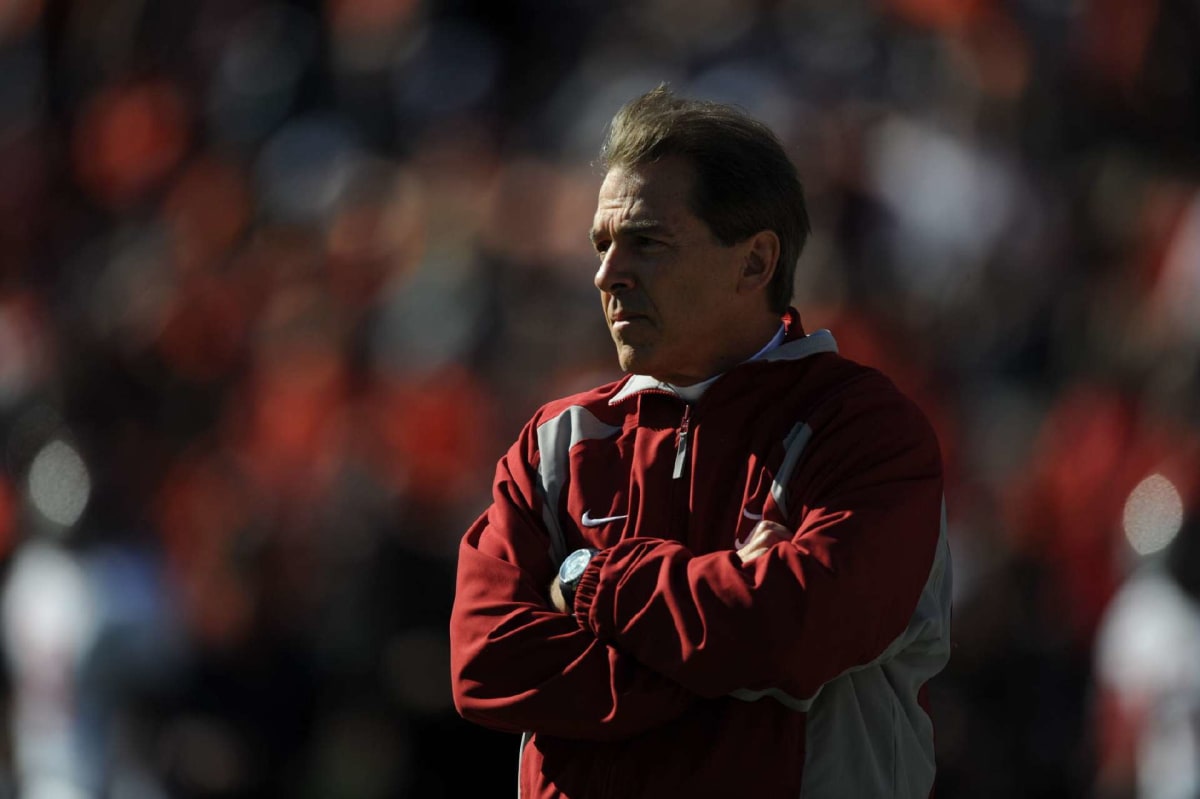Alabama’s Greg Byrne is a smart and capable athletic director, but if I were a football coach with a good Power 5 job right now, I would block his number.
Replacing Nick Saban was always going to be a thankless job, and to understand why, you don’t even have to look beyond Tuscaloosa. For decades, the Alabama Crimson Tide were the example of why you don’t want to follow a legend. After replacing Bear Bryant, Ray Perkins, a former Alabama All-American, lasted four seasons. Bill Curry lasted three; his last team finished in the top 10, but he was still unpopular and he bolted for Kentucky. Gene Stallings, one of Bryant’s “Junction Boys” at Texas A&M, did win a national title, but the door kept revolving until Saban arrived in 2007. By that point, Bryant had been dead for 24 years.
Alabama fans expect championships. Saban delivered them with remarkable regularity. But the challenge for the next coach will be even bigger than it appears, because college football is no longer set up for anyone to be that dominant. Even if Byrne somehow identifies and then hires the next Saban, that person won’t win like Saban did.

Bob Rosato/Sports Illustrated
Saban ran the premier program in the sport for a long time. One of my favorite teams of his was one of his least talented: the 2008 Crimson Tide. Saban was in his second season. He had just gone 7–6, with a November loss to the Louisiana-Monroe Warhawks. Alabama began the ’08 season ranked 24th, then won its first 12 games to rise to No. 1 in the country, setting up an SEC championship game clash against Urban Meyer, Tim Tebow and perhaps the most talented Florida Gators team ever. The Gators won, but Alabama had fired a warning shot to the rest of the SEC. The next season, the Tide won the national title.
So I am not arguing with anybody who calls Saban the best ever. What he did is incredible. But Saban also had the benefit of coaching in an era that was set up for the best program to win several national titles.
Before the Bowl Championship Series began, in 1998, polls determined national champions, and voters almost always favored undefeated teams over teams with a loss, regardless of strength of schedule. Sometimes two powerhouses went undefeated, like in ’94 (the Penn State Nittany Lions and Nebraska Cornhuskers) or 1997 (Nebraska and the Michigan Wolverines), and voters had to choose. It was more common for every team to lose at least one game, but when that happened, the one-loss teams had very little control over whether they won the national title. Conference tie-ins determined most bowl matchups, and voters could apply whatever criteria they preferred.
The BCS pitted two top teams (though not necessarily the top two teams) against each other, giving one-loss teams a little more control over their final ranking.
Related: Nick Saban’s Revolutionary Impact Will Be Felt Long After He’s Gone
But the big change came with the four-team College Football Playoff. It was the ideal structure to reward the best program in the sport. It enabled great teams to lose one game, then reassert their greatness in the postseason.
Consider that, from 1987 to ’97, Bobby Bowden coached six Florida State Seminoles teams that finished the regular season with one loss. All six won their bowl games. But only one, the ’93 team, won the national title.
But from 2014 to ’23, Saban coached five Alabama teams that finished the regular season with one loss. All five made the CFP. Three won the national title.
The four-team CFP era was also set up for success to beget success. Recruits knew most programs were never going to make the CFP, so their best chance to win a title was to sign with one of the programs that was already at the top.
Now look at what’s coming. Less stringent rules allow players who aren’t starting to transfer to places where they can start immediately—and, because they can now capitalize on their name, image and likeness, playing time is more valuable than ever. Teams can fill holes with transfers, and it’s harder to stockpile talent.
Related: Nick Saban Never Stopped Proving Himself as College Football’s Coaching GOAT
In 2018, after quarterback Tua Tagovailoa replaced Jalen Hurts in the second half of the national title game, they both returned to Alabama. The Crimson Tide did not win the national title in ’18, but they did make the CFP, because after Tagovailoa was injured in the SEC title game, Hurts led Alabama to victory. Hurts did not transfer to the Oklahoma Sooners until he graduated from Alabama and could play immediately. In today’s environment, Hurts might have left earlier.
The changes have already made the playing field more even. The two teams that just played for the national title, Michigan and the Washington Huskies, built their teams without a single top-five recruiting class.
Of course, next season the CFP will expand to 12 teams. That means more teams will be able to sell recruits on their national title chances—and the best teams will have to win three playoff games instead of two.
Put this all together, and there is an obvious conclusion: Nobody will dominate the 12-team era like Alabama dominated the four-team era.
That is good for college football. But it’s not so good for whoever takes the Tide job. You can win a lot of games at Alabama. I just don’t see how anyone can possibly win enough.







